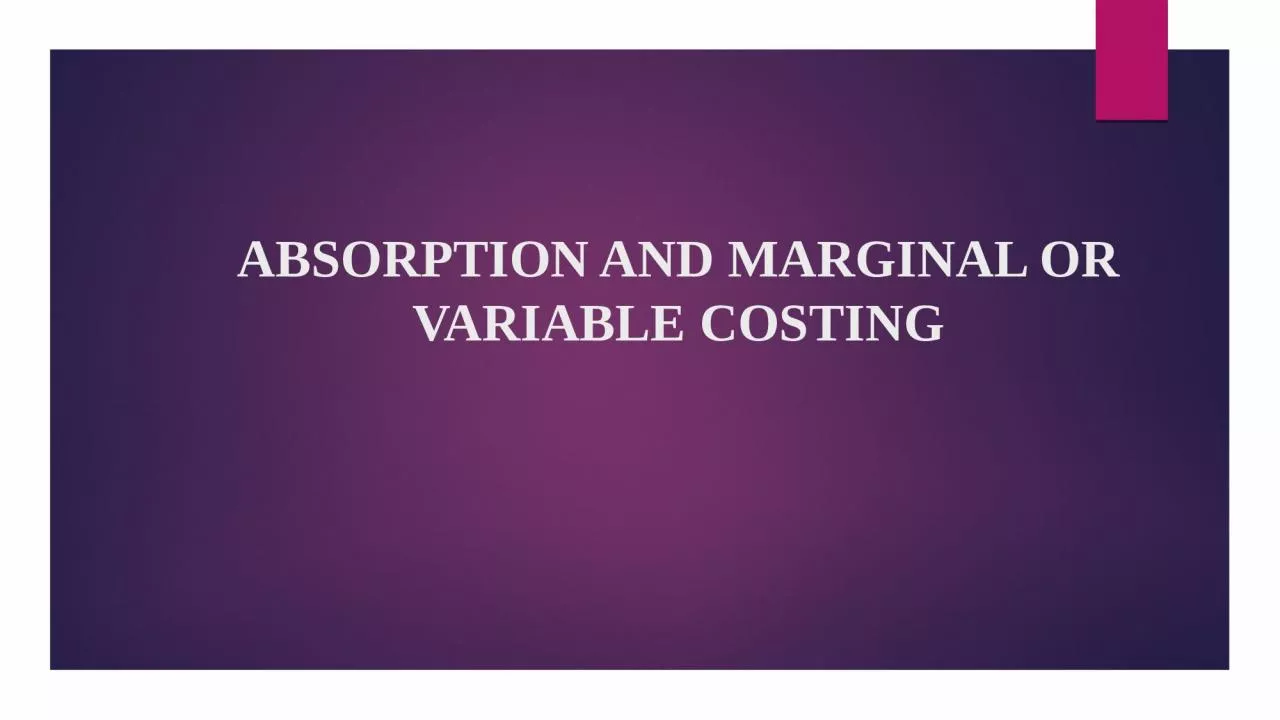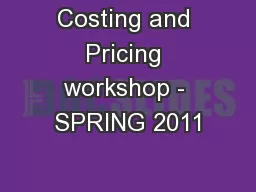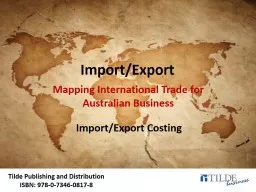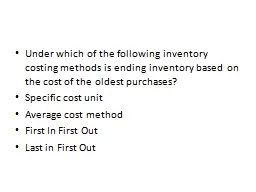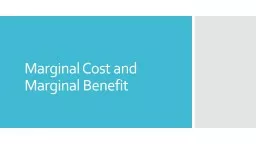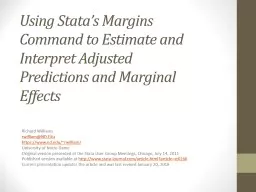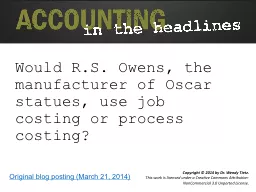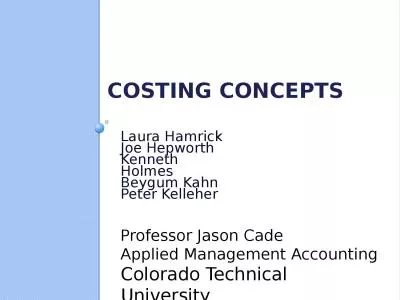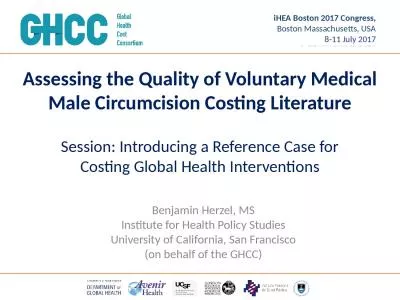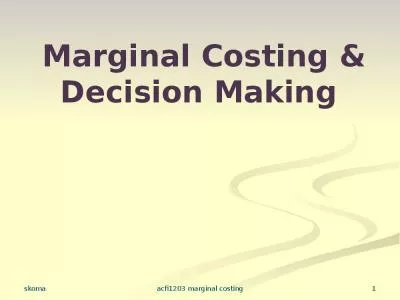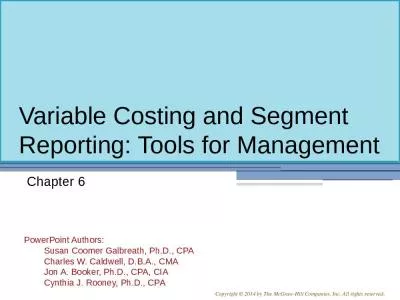PPT-ABSORPTION AND MARGINAL OR VARIABLE COSTING
Author : eloise | Published Date : 2023-11-04
CHAPTER OBJECTIVES Meaning definition and characteristics of absorption costing Determination of income under absorption costing Advantages and limitations
Presentation Embed Code
Download Presentation
Download Presentation The PPT/PDF document "ABSORPTION AND MARGINAL OR VARIABLE COST..." is the property of its rightful owner. Permission is granted to download and print the materials on this website for personal, non-commercial use only, and to display it on your personal computer provided you do not modify the materials and that you retain all copyright notices contained in the materials. By downloading content from our website, you accept the terms of this agreement.
ABSORPTION AND MARGINAL OR VARIABLE COSTING: Transcript
Download Rules Of Document
"ABSORPTION AND MARGINAL OR VARIABLE COSTING"The content belongs to its owner. You may download and print it for personal use, without modification, and keep all copyright notices. By downloading, you agree to these terms.
Related Documents

